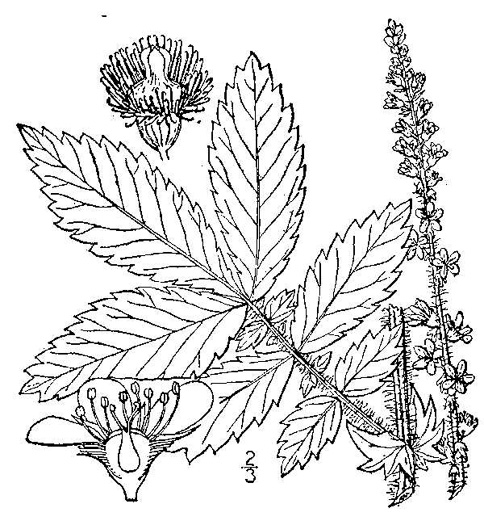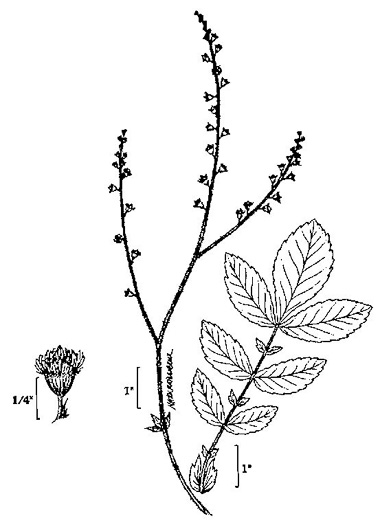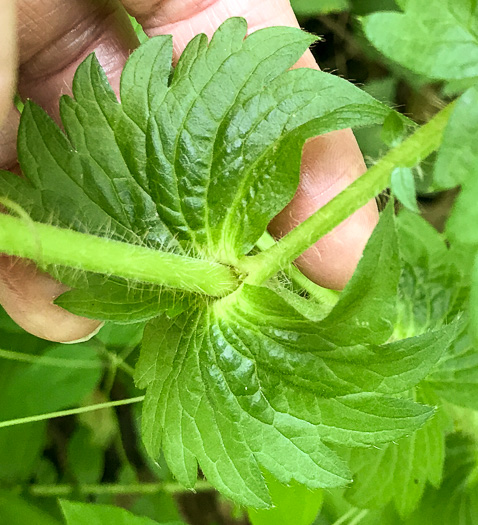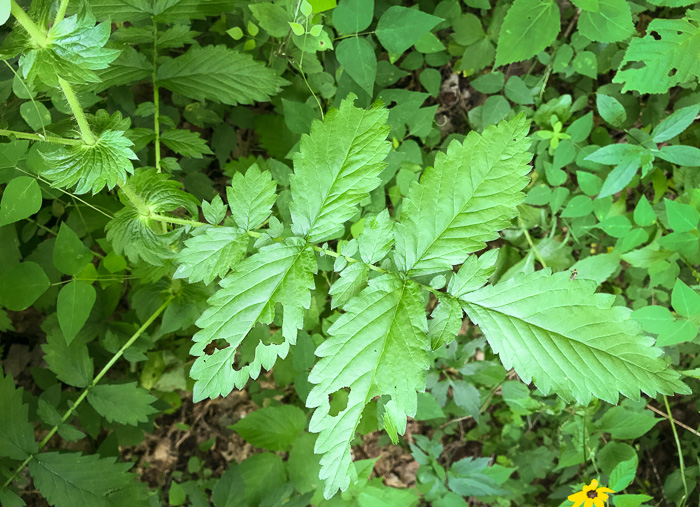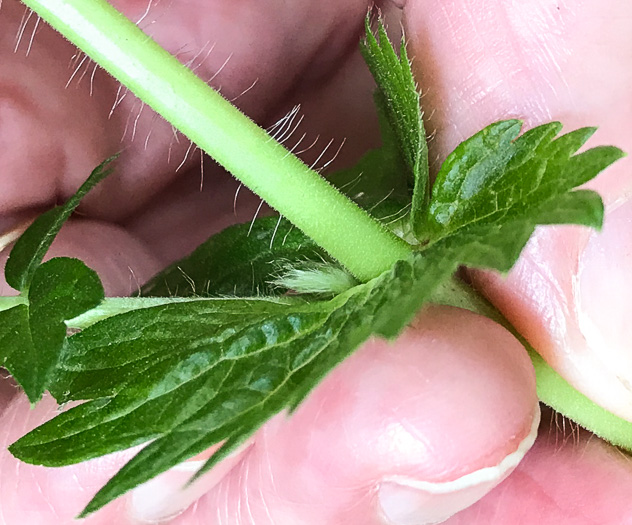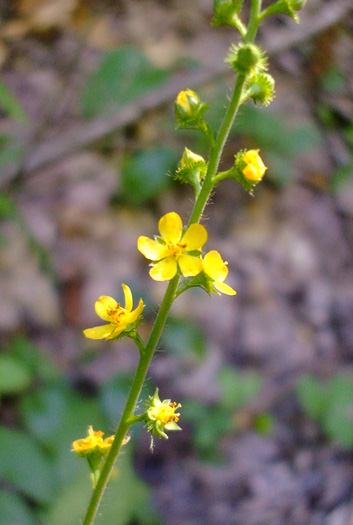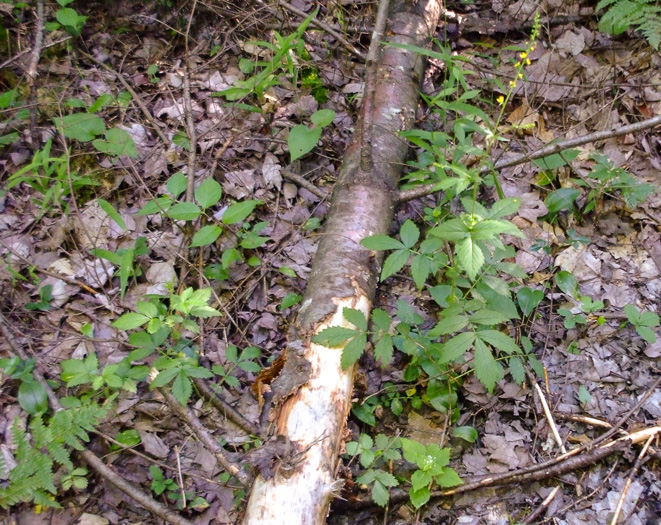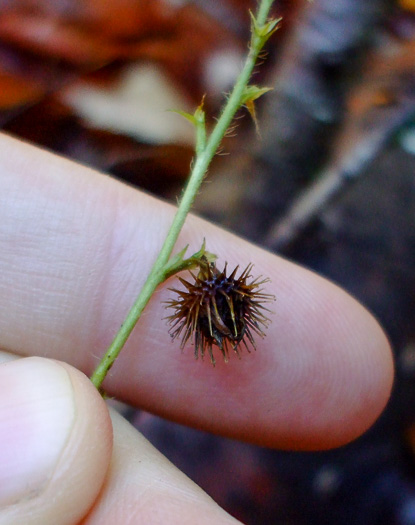Spermatophytes (seed plants): Angiosperms (flowering plants): Eudicots: Core Eudicots: Rosids: Fabids: Rosales
WEAKLEY'S FLORA OF THE SOUTHEASTERN US (4/24/22):
Agrimonia gryposepala
FAMILY
Rosaceae
Go to FSUS key
Dig deeper at SERNEC, a consortium of southeastern herbaria.
Read more about Common Agrimony at Vascular Plants of North Carolina.
SYNONYMOUS WITH
PLANTS NATIONAL DATABASE:
Agrimonia gryposepala
FAMILY
Rosaceae
SYNONYMOUS WITH Floristic Synthesis of North America. BONAP (Kartesz, 2021)
Agrimonia gryposepala
SYNONYMOUS WITH Flora of North America north of Mexico, vol. 9 (2014)
Agrimonia gryposepala
SYNONYMOUS WITH VASCULAR FLORA OF THE CAROLINAS (Radford, Ahles, & Bell, 1968) 097-09-003:
Agrimonia gryposepala FAMILY Rosaceae
SYNONYMOUS WITH Manual of the Southeastern Flora (Small, 1933, 1938)
Agrimonia gryposepala
COMMON NAME:
Common Agrimony, Swamp Agrimony
To see larger pictures, click or hover over the thumbnails.
JK Marlow jkm200717_6639
July Jackson County NC
Nantahala National Forest
Stipules large and foliaceous, semicordate, 1-2cm wide, per Manual of Vascular Plants of NE US & Adjacent Canada (Gleason & Cronquist, 1991).
JK Marlow jkm200717_6640
July Jackson County NC
Nantahala National Forest
Usually two or more pairs of minor leaflets between all major leaflet pairs, per Weakley's Flora (2020).
![]() COMPARE
pinnately compound leaves of forbs
COMPARE
pinnately compound leaves of forbs
JK Marlow jkm200717_6641
July Jackson County NC
Nantahala National Forest
Stem with glistening stipitate-glandular hairs & scattered, erect, 2mm hairs, per Flora of North America.
Jeff Ausmus jma_agrgry
July Roscommon County MI
Roscommon State Forest Area: Backus Township
Stem and inflorescence with short-stalked, or both short-stalked and sessile, glistening glands, per Weakley's Flora (2023).
Jeff Ausmus jma_agrgry3
October Roscommon County MI
Roscommon State Forest Area: Backus Township
Fruiting hypanthia's hooked bristles in 4-5 circumferential rows, proximal row reflexed, per Flora of North America.
WEAKLEY'S FLORA OF THE SOUTHEASTERN US (4/24/22):
Agrimonia gryposepala
FAMILY
Rosaceae
SYNONYMOUS WITH
PLANTS NATIONAL DATABASE:
Agrimonia gryposepala
FAMILY
Rosaceae
SYNONYMOUS WITH
Floristic Synthesis of North America. BONAP (Kartesz, 2021)
Agrimonia gryposepala
SYNONYMOUS WITH
Flora of North America north of Mexico, vol. 9
Agrimonia gryposepala
SYNONYMOUS WITH
VASCULAR FLORA OF THE CAROLINAS (Radford, Ahles, & Bell, 1968) 097-09-003:
Agrimonia gryposepala
FAMILY
Rosaceae
SYNONYMOUS WITH
Manual of the Southeastern Flora (Small, 1933, 1938)
Agrimonia gryposepala
If a search such as "Carex leptalea var. leptalea" doesn't deliver the results you want, try "Carex leptalea".
Or, to minimize chances of a misspelling, try just "Carex le".
Less is more: If "pencil flower" doesn't deliver the results you want, try "pencil".

